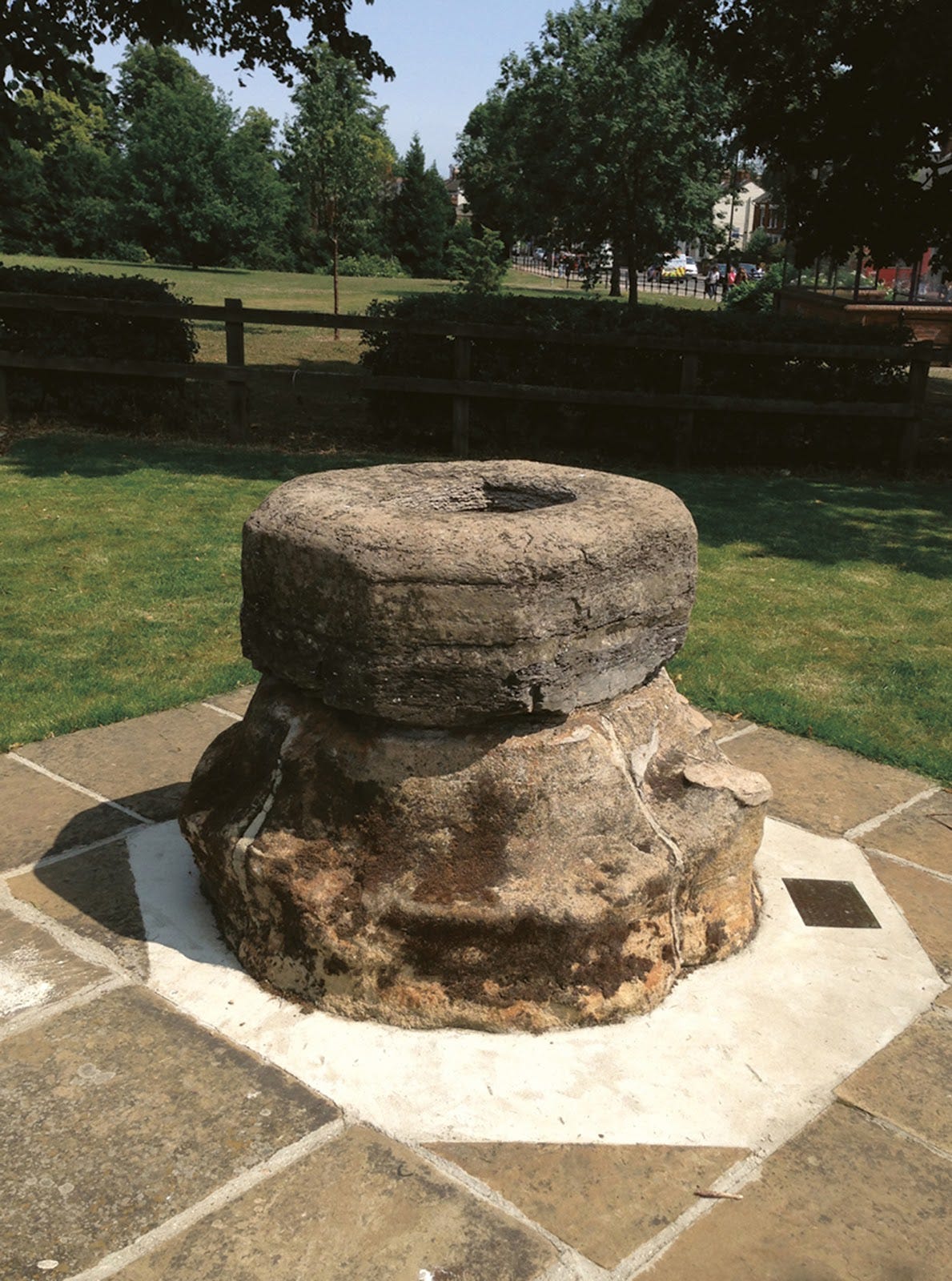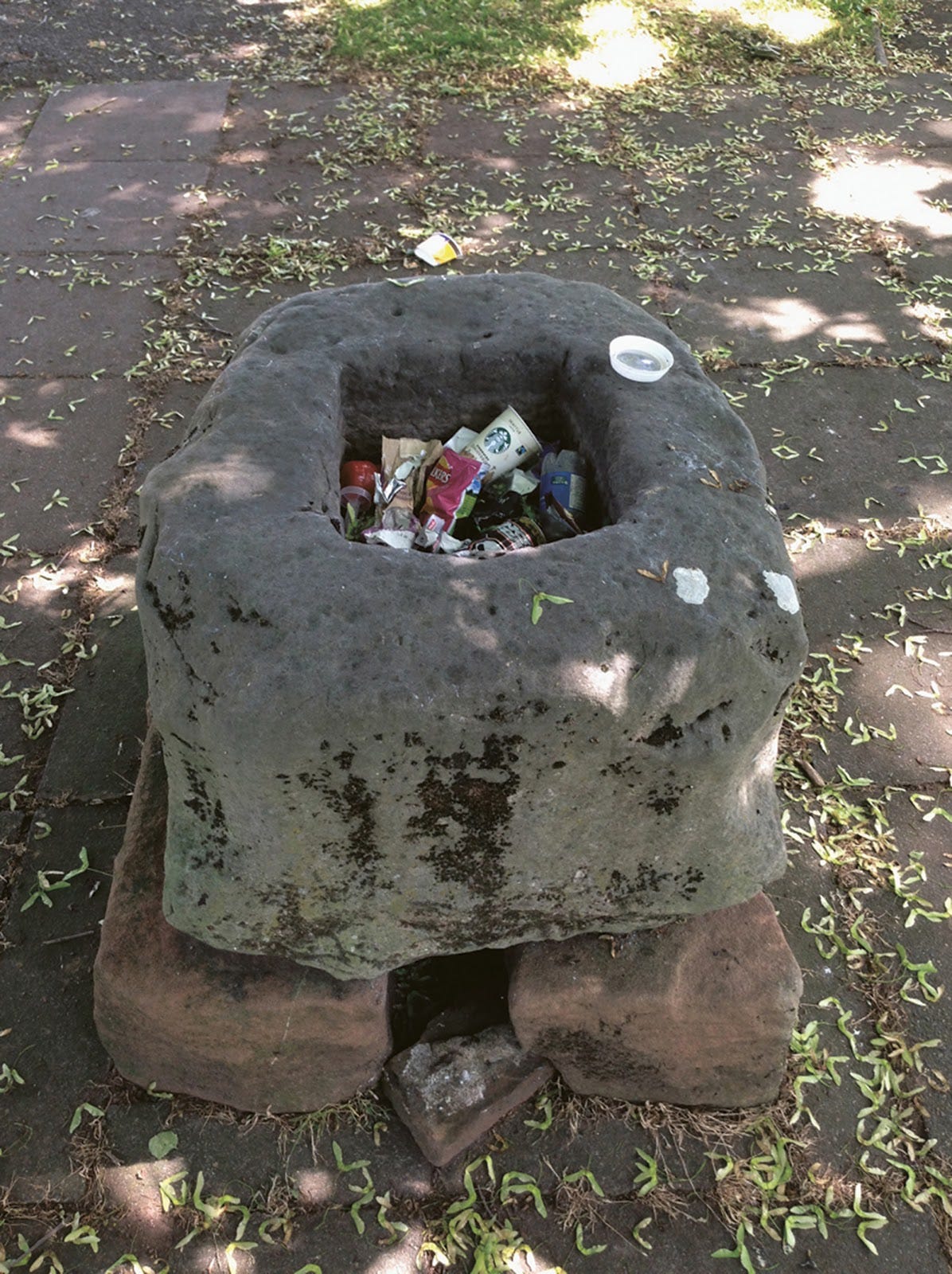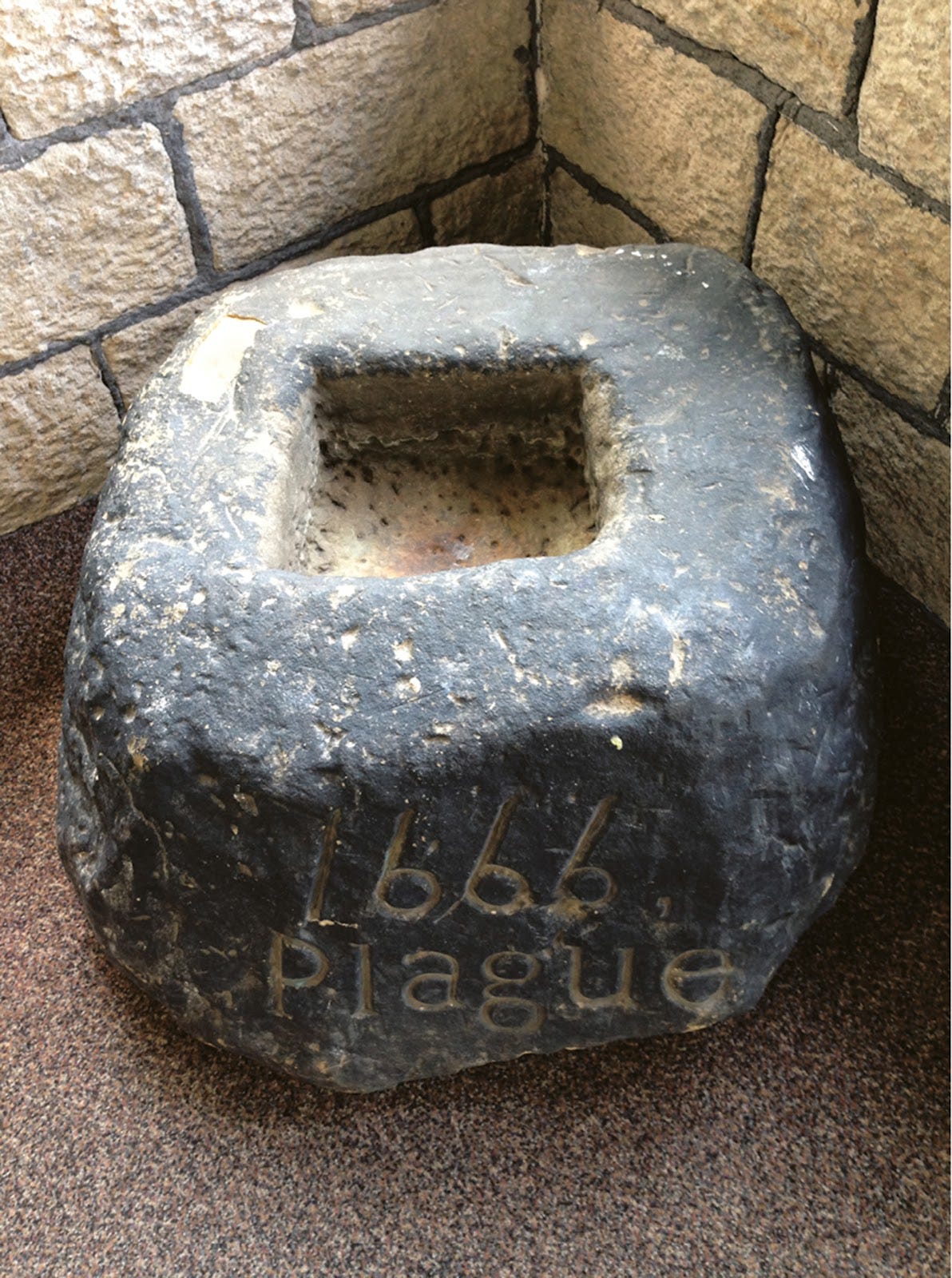The Forgotten Plague Stones of England
Liminal gathering places were created out of necessity for plague sufferers
Belgian artist Sophie Nys turns down Dead Man’s Lane from the bustling high street in the tidy midlands town of Derby, England. She arrives at a quiet public square known as Friar Gate, setting up her tripod and camera, aiming her lens at an unusual “Headless Cross,” an ancient basin-shaped rock set on a slate pedestal. But this isn’t a cross or other monument — it’s actually a plague stone, a rare place where sufferers of the Derby bubonic plague of 1665 could come to meet with the town’s luckier other half — the healthy.
Nys has been photographing these unusual monuments to the intricate relationship between disease, commerce, and compassion since 2013. She recently published a book of photographs, focusing on 22 mostly neglected and forgotten plague stones around England.
The Black Plague reached England via a sailing ship in June of 1348. As it spread quickly and unevenly around the country, the need to quarantine sufferers of the disease produced a number of unusual social conventions that ended up being utilized for centuries as wave after wave of the Black Death struck Britain. Among these conventions was the establishment of a loose network of plague stones – usually on city outskirts – around England, stones which served as liminal meeting places for, and boundaries between, the healthy and the sick within an affected community.
In addition to serving as a site for exchanging messages, the stones also functioned as a point of commerce where goods were left for the ill, who in turn paid for them by placing “infected” coins in a hollow carved into the top of the stone that was filled with vinegar or urine, which were thought at the time to disinfect the coins. Soon, the purpose of the plague stones broadened — donations of food, clothing, even firewood, were left at the stones, which transformed the stones into a vital public service for plague sufferers.
The Derby plague stone was utilized again in 2020 and 2021 during the COVID-19 pandemic by Derby Dachshund Society members, who regularly met here with their dogs, talked at a safe distance, and took in the fresh air and sunlight. Member Liz Taylor recalls: “The plague stone became a meeting point yet again after hundreds of years. It seems that humans – the most social of animals – just can’t be kept apart, even during times of disease.” Asked why they gathered around the plague stone, Taylor replies: “I don’t know. It just felt right.”
In his History of Derby, the historian William Hutton described the plague stone that stood in his hometown:
1665. Derby was again visited by the plague at the same time in which London fell under that severe calamity. The town was forsaken; the farmers declined the Market-place; and grass grew upon that spot which had furnished the supports of life. To prevent a famine, the inhabitants erected at the top of Nuns-green, one or two hundred yards from the buildings, now Friar-gate, what bore the name of Headless-cross, consisting of about four quadrangular steps, covered in the centre with one large stone; the whole near five feet high; I knew it in perfection. Hither the market people, having their mouth primed with tobacco as a preservative, brought their provisions, stood at a distance from their property, and at a greater from the townspeople, with whom they were to traffic. The buyer was not suffered to touch any of the articles before purchase; but when the agreement was finished, he took the goods, and deposited the money in a vessel filled with vinegar, set for that purpose.
Hutton goes on to note that commercial relations were in fact governed during such times by sentiments that would have been anomalous without the presence of the disease. “Confidence,” he wrote, “raised by necessity, took place between buyer and seller, which never existed before or since; the first could not examine the value of his purchase, nor the second that of his money.”
The Black Plague reached England in June 1348. It was the first and most severe manifestation of the second pandemic, caused by Yersinia pestis bacteria. Originating in Asia, it spread west along the trade routes across Europe and arrived on the British Isles from the English province of Gascony. The plague was spread by flea-infected rats, as well as individuals who had been infected on the continent. Rats were the reservoir hosts of the Y. pestis bacteria and the Oriental rat flea was the primary vector.
The first-known case in England was a seaman who arrived at Weymouth, Dorset, from Gascony in June 1348. By autumn, the plague had reached London, and by summer 1349 it covered the entire country, before dying down by December. Low estimates of mortality in the early twentieth century have been revised upwards due to re-examination of data and new information, and a figure of 40–60% of the population is widely accepted.






